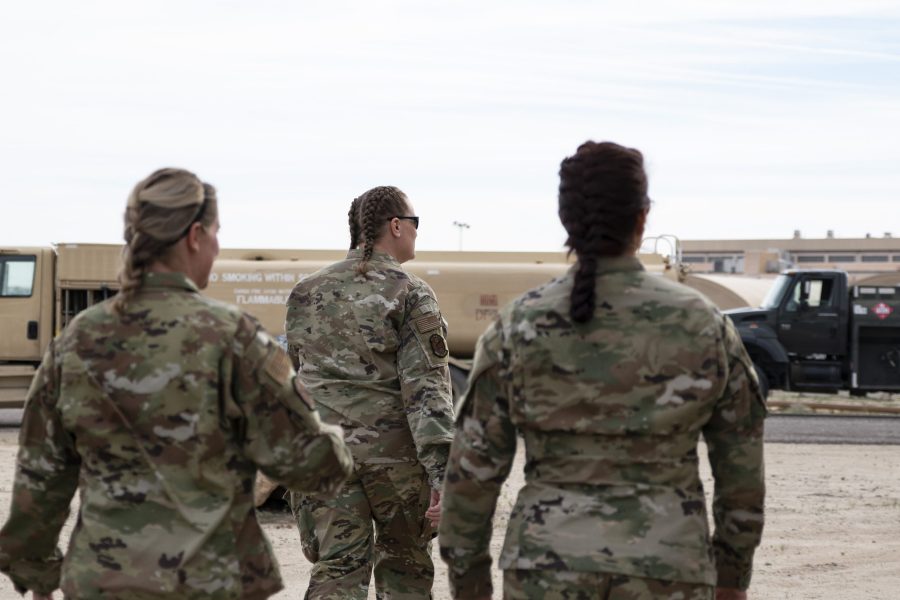From neck tattoos to ponytails, the Air Force has revamped its dress and appearance standards in recent years. To tamp down on confusion, the service republished its dress and personal appearance instructions Feb. 29, complete with new graphics to serve as visual guides.
The graphics show authorized and unauthorized styles for things like:
Nail Polish Color
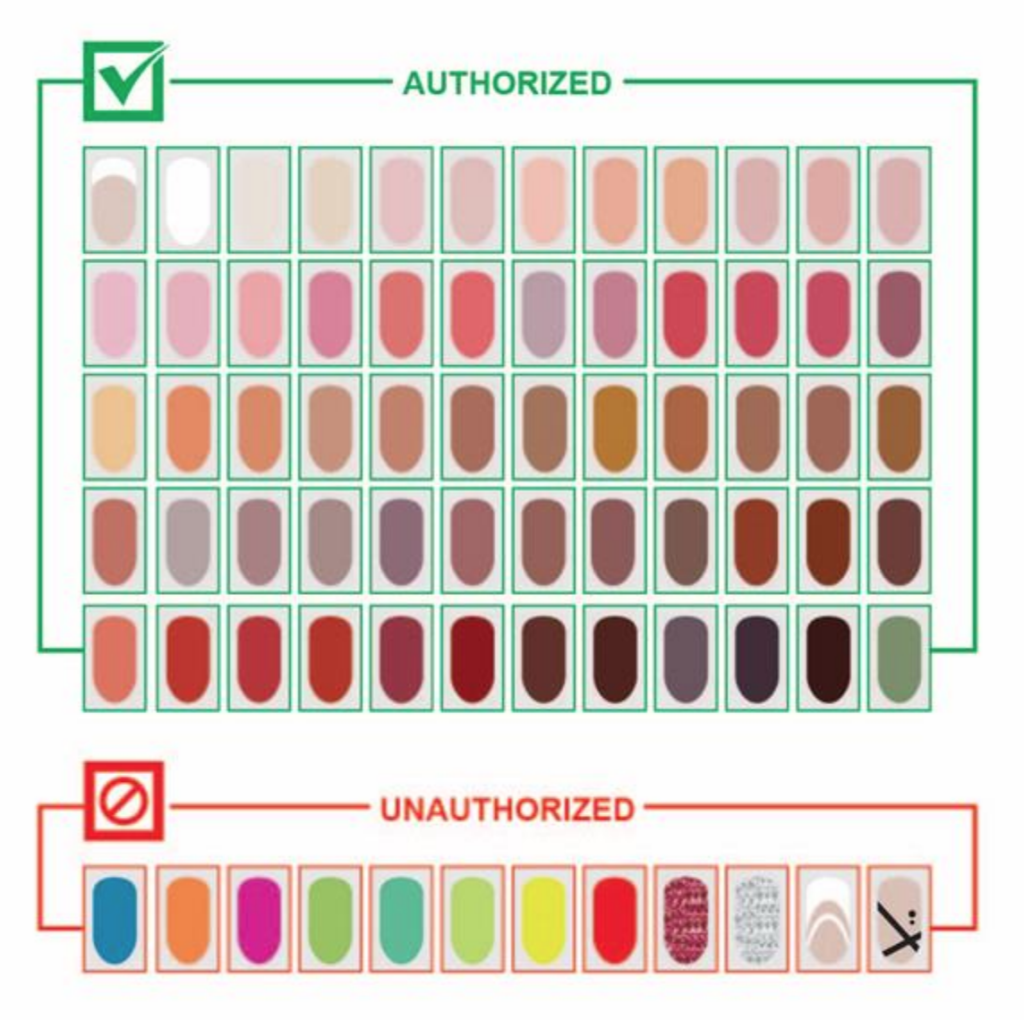
Eyelash Extensions
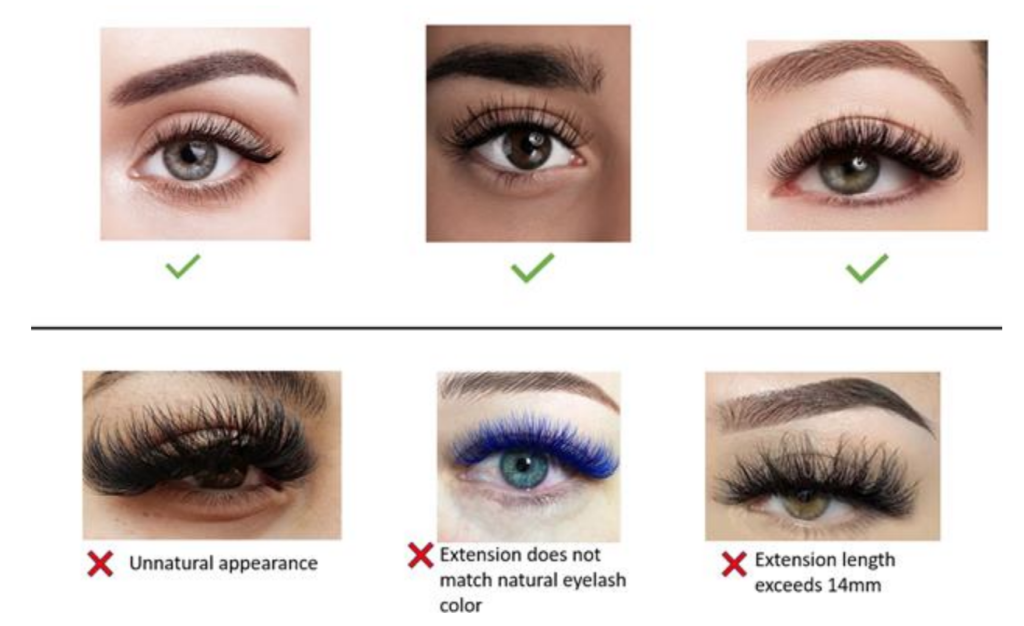
Neck Tattoos
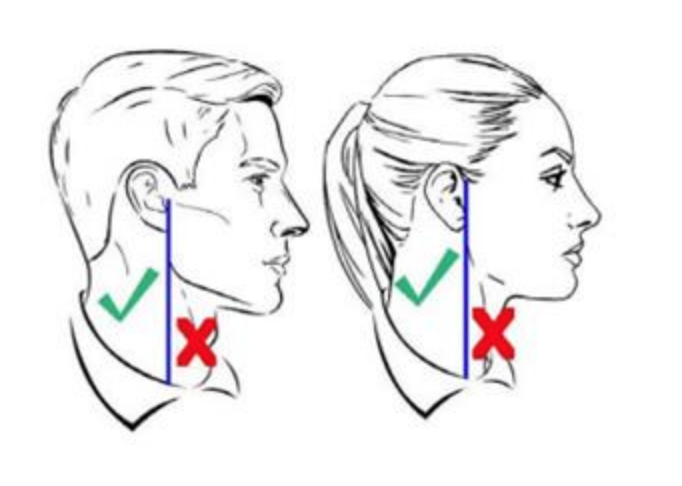
Mustaches
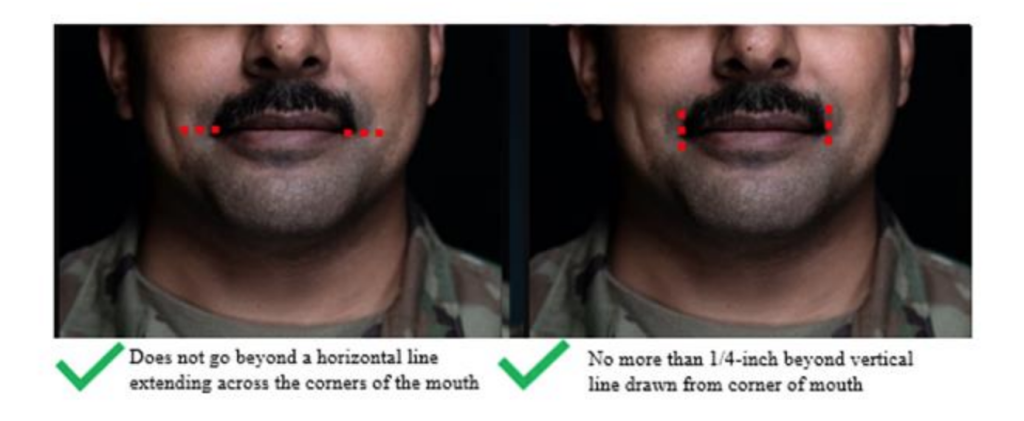
Hair
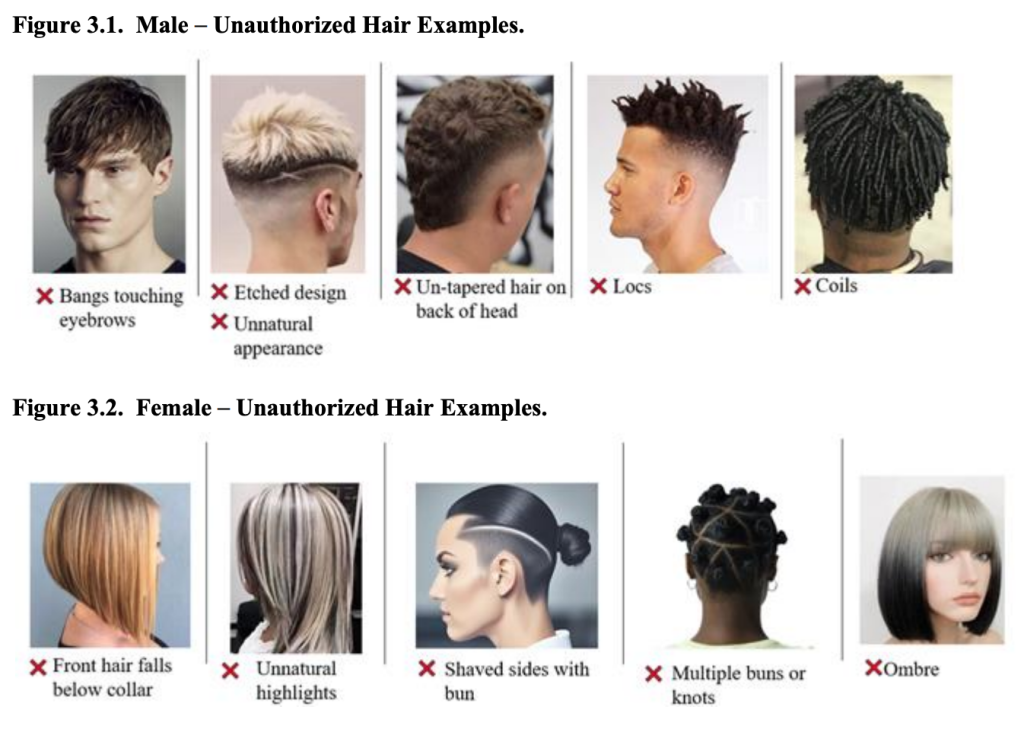
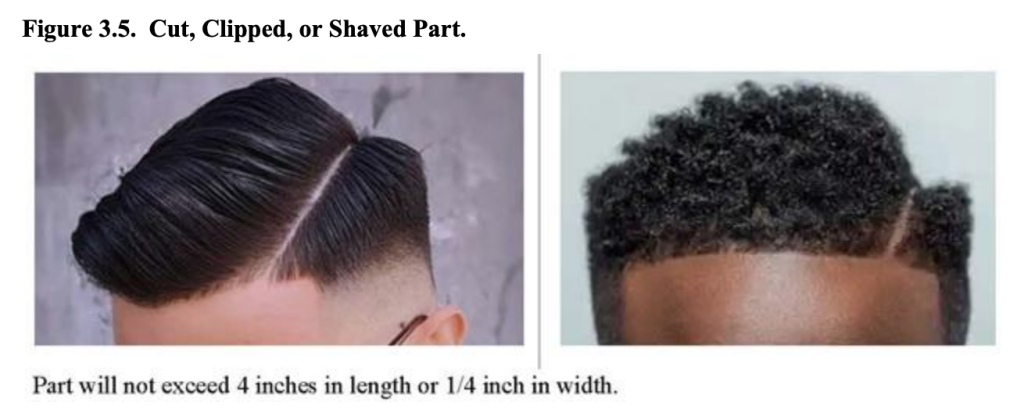
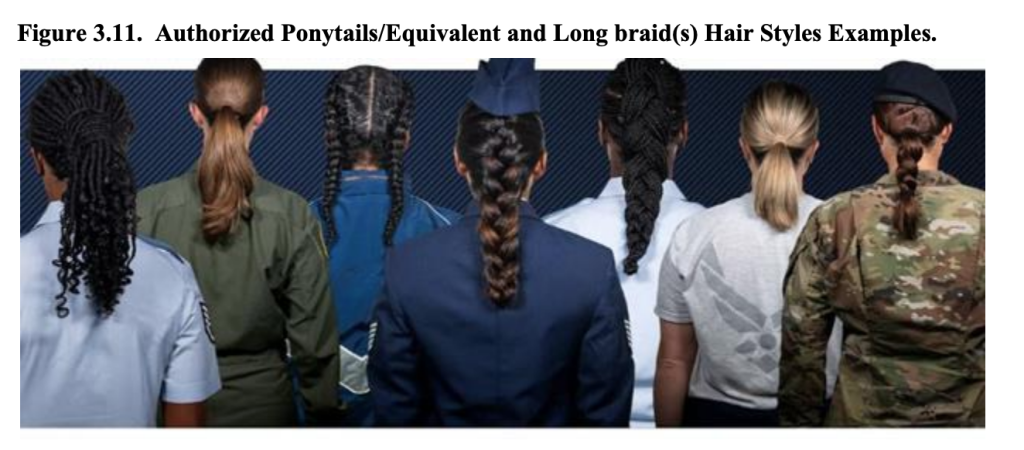
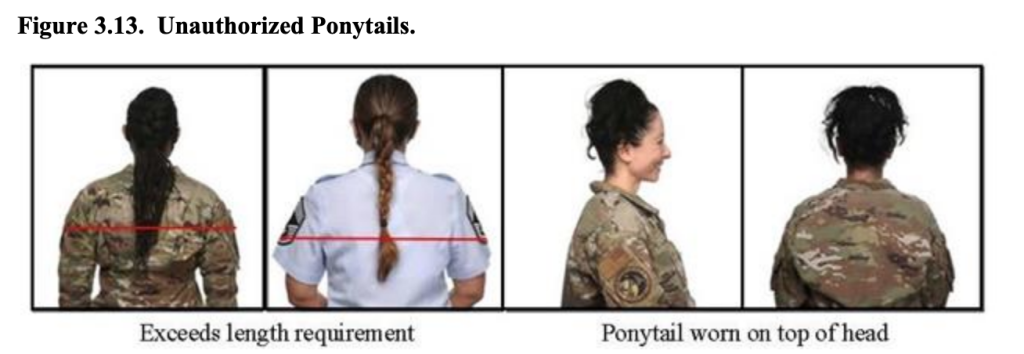
“We’ve reviewed the policy in whole to make certain we are communicating standards clearly, making it an easier tool for commanders, supervisors, Airmen, and Guardians,” Lt. Gen. Caroline Miller, deputy chief of staff for manpower, personnel, and services, said in a statement.
“Revisions were made over a number of years, but we felt the need to revisit the entire document to remove redundancies, out-of-date information, and decrease subjectivity,” she added.
Space Force Guardians must adhere to the regulations laid out in the revised DAFI 36-2903, though they also have Guardian-specific guidance for their unique nametape, badges, patches, rank insignia, and other features laid out in a separate document.
Other recent changes include:
- Authorizing installation commanders to designate Child Development Centers as a no-hat, no-salute zone. Salutes are also not required when either person is carrying children.
- Adding headbands to the list of authorized cold weather accessories, such as scarves, earmuffs, watch cap, and gloves.
- Authorizing a one-inch maximum logo on purses and handbags and any size logo on gym bags.
- Allowing cold weather parkas to be commercially purchased, as long as the parkas are OCP pattern Coyote Brown and have the same authorized configuration of name tapes, service tape, rank, and patches.
- Maternity cold weather outerwear can also be purchased commercially and with fewer restrictions.
- Organizational emblems are authorized on the back of morale shirts and heritage morale patches can be work on the flight duty uniform.
Female Airmen and Guardians can also now wear mess dress trousers or slacks instead of skirts. Commanders can authorize Airmen to wear caps while indoors due to baldness or hair loss from a medical condition. Security Forces Airmen can wear their Security Forces shield on their OCP uniform, and mustaches can extend up to a quarter inch beyond a vertical line drawn from the corner of the mouth, though they still cannot extend below the upper lip. Beards are still not authorized without a waiver, though the new regs clarify that wing commanders are authorized to approve waivers for religious regalia, including beards.
Airmen and Guardians around the world often tote oversized water bottles and energy drinks to stay hydrated and caffeinated. The new regs clarify that they can now consume those beverages while walking in uniform, though eating while walking in uniform is still not allowed.
Many of the changes made over the past few years were intended to help with recruiting and diversity efforts. For example, braids and ponytails were authorized for female Airmen in 2021 in part because the mandatory tight buns often led to migraines and even hair loss. Small hand and neck tattoos were authorized in part to try to bring in more qualified recruits.
The updated policy comes about a year after Chief Master Sergeant of the Air Force JoAnne Bass wrote an open memo urging Airmen to abide by standards.
“These changes and updates to the publication are meant to clarify professional military appearance and uniform standards across the Air Force and empower all Airmen to hold themselves, and others accountable,” she said in a Feb. 29 statement. “Part of being a Profession of Arms is embodying the higher set of standards that comes with serving our great nation. Accountability matters. Standards matter—and the ones we walk by, the ones we ignore, are the ones we accept.”
